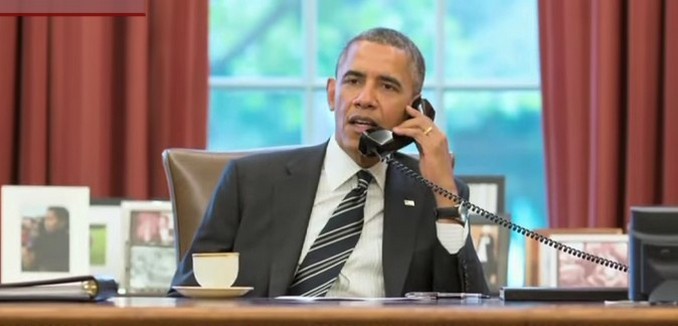Noting that President Barack Obama’s stated goals for an acceptable nuclear deal with Iran in 2012 would see Tehran “‘[…] end their nuclear program’ and ‘abide by the U.N. resolutions that have been in place,'” an unsigned staff editorial published today in The Washington Post laments that the president has retreated “a long way” from these positions.
The “key parameters” for an agreement on Iran’s nuclear program released Thursday fall well short of the goals originally set by the Obama administration. None of Iran’s nuclear facilities — including the Fordow center buried under a mountain — will be closed. Not one of the country’s 19,000 centrifuges will be dismantled. Tehran’s existing stockpile of enriched uranium will be “reduced” but not necessarily shipped out of the country. In effect, Iran’s nuclear infrastructure will remain intact, though some of it will be mothballed for 10 years. When the accord lapses, the Islamic republic will instantly become a threshold nuclear state.
The editorial also observes that the sanctions relief that would follow an agreement would allow Iran “to wage more aggressively the wars it is already fighting or sponsoring across the region.”
In addition to emphasizing Obama’s retreat on demands of three years ago, the editorial also questions whether the outlines of the deal announced today would even accomplish the more limited goal that the president now cites as his benchmark of success.
The agreement is based on a theoretical benchmark: that Iran would need at least a year to produce fissile material sufficient for a weapon, compared with two months or less now. It remains to be seen whether the limits on enrichment and Iran’s stockpile will be judged by independent experts as sufficient to meet that standard.
According to Olli Heinonen, the former deputy director-general of the International Atomic Energy Agency, the terms of the emerging deal would not meet President Obama’s stated goal.
Although The Washington Post endorsed Obama for president twice and originally supported the Joint Plan of Action when it was signed in November 2013, it has been taking a more critical look at the administration’s nuclear diplomacy with Iran since October of last year. In October, the Post’s editors urged the administration to “hold the line Iran,” and observed that in contrast to the administration’s efforts to accommodate Iran, [i]f Iran has made similar efforts to bridge the gaps between the two sides, there is no report of them.”
Subsequent editorials have called on the administration to work more closely with Congress to achieve a deal with Iran and called for more pressure to be brought against Iran to force it to be more flexible in nuclear negotiations.
Earlier this week, a Post editorial argued that the deal being pursued would reward Iran for its past and ongoing illegal nuclear activities.
Danielle Pleta of the American Enterprise Institute elaborated on this argument in today’s Post.
[F]or an administration that professes its affection for international law and regimes, this agreement will signal the death knell of the Nuclear Non-Proliferation Treaty. Iran used the treaty’s terms to pave the way toward nuclear weapons status, successfully defied the treaty’s enforcement agency and the U.N. Security Council and will not be held accountable for violating its international obligations. By acquiescing in Iran’s use of the treaty to facilitate nuclear weapons proliferation, the administration is effectively signing off on a road map that others in the region — led by Saudi Arabia — have made clear they intend to follow to protect themselves from the Iranian nuclear threat.
[Photo: CNN / YouTube ]




